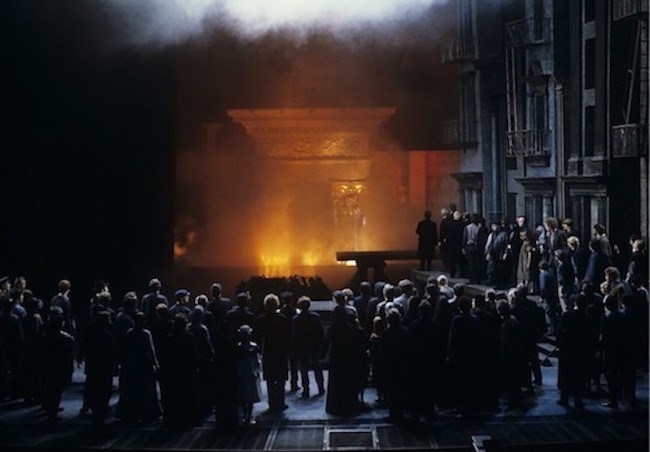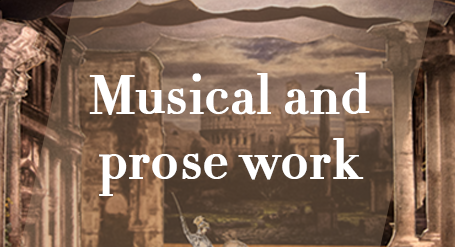
The musical work of Richard Wagner is composed of operas or “musical dramas” ranging from “Fairies” (Die Feen) to “Parsifal”. A detailed presentation of each of these major works is associated here with a set of thematic articles, placing them not only in the context of his personal life but also in his social, economic and cultural context. This section also includes all the musical works (excluding opera) and his literary work.
THE RING OF THE NIBELUNG, WWV86
Der Ring des Nibelungen, WWV86
In short
The Ring of the Nibelung (Der Ring des Nibelungen) is a cycle of four operas with, successively, The Rhinegold (Das Rheingold, WWV86a), The Valkyrie (Die Walküre, WWV86b), Siegfried (WWV86c) and Twilight of the Gods (Götterdämmerung, WWV86d) created by Richard Wagner.
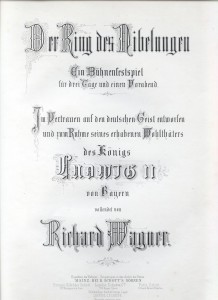 Composed over nearly 30 years of the composer’s life – that is between 1848 and 1876 – this gigantic work was intended to be performed on the stage of the Bayreuth Festival Theatre, built according to the composer’s wishes in optimal execution and staging conditions. Interrupted multiple times during both the writing of his libretto and the music composition, redesigned as many times, Wagner’s titanic work (nearly sixteen hours of music in total) took to its pinnacle the concept of Gesamtkunstwerk (Total work of Art) that the revolutionnary artist presented and defended throughout his career as a composer and playwright, especially in his essays (Opera and Drama and The Artwork of the Future).
Composed over nearly 30 years of the composer’s life – that is between 1848 and 1876 – this gigantic work was intended to be performed on the stage of the Bayreuth Festival Theatre, built according to the composer’s wishes in optimal execution and staging conditions. Interrupted multiple times during both the writing of his libretto and the music composition, redesigned as many times, Wagner’s titanic work (nearly sixteen hours of music in total) took to its pinnacle the concept of Gesamtkunstwerk (Total work of Art) that the revolutionnary artist presented and defended throughout his career as a composer and playwright, especially in his essays (Opera and Drama and The Artwork of the Future).
The musical world had lost, since the Baroque period, the habit of drawing inspiration from the mythological resources (the Greek and Roman ones generally) in favour of historical contexts conducive to the development on stage of the splendour of the great romantic opera with strong choruses, marches, parades and more or less truthful evocations of characters who actually existed.
But in order to give a symbolic and timeless dimension to what he considered, since its draft, as his “Great Work“, Richard Wagner, then exiled to Zurich after being banished from the Germanic Confederation, composed the poetic text in verse of his titanic project using characters emanating from the Legend of the Nibelungen.
The composer had not lost faith in his revolutionary and anti-capitalist ideas. Thus, in the libretto written by Wagner, the myth of the theft of gold that brings omnipotence to its holder, is a metaphor of the industrial era, a denunciation of the almighty capitalism, at the expense of the values of love and humanity. Continuing the nationalist momentum that had always inhabited him and for which he was one of the most ardent defenders, the composer also wished, through his work, to remind Germans of their origins and values, too often corrupted, according to him, by the triumph of the bourgeoisie and a culture he deemed mediocre.
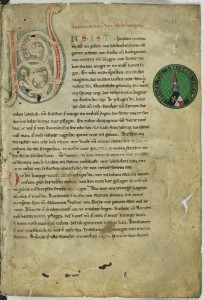 Besides, in this patriotic impetus, concurrently with the birth of this mythological work, Wagner during that time also thought of other dramas which have come to us only in the form of sketches, but whose main subjects were characters such as Frederick Barbarossa, Jesus of Nazareth, Achilles and Wayland the Smith (Wieland der Schmied). Other archetypes that could have embodied this hero dear to Wagner, an ardent patriot, a revolutionary. But only Siegfried will see the light of day.
Besides, in this patriotic impetus, concurrently with the birth of this mythological work, Wagner during that time also thought of other dramas which have come to us only in the form of sketches, but whose main subjects were characters such as Frederick Barbarossa, Jesus of Nazareth, Achilles and Wayland the Smith (Wieland der Schmied). Other archetypes that could have embodied this hero dear to Wagner, an ardent patriot, a revolutionary. But only Siegfried will see the light of day.
The Ring was born after a thorough reading of the Edda from the Nordic mythology of the 7th century, of the Völsunga saga (novel in prose from the 13th century) and of the Song of the Nibelungs (Das Nibelungenlied) (anonymous work from the 13th century), Wagner undertaking a sort of syncretism of the different sources to build the framework of his own epic.
Originally, Wagner’s focus was essentially on the episode of Siegfried’s death, which was to cause the creation of a single drama. But so as to be quite clear in his words and in his desire to explain to his future audience the context in which the protagonists come to the tragic outcome of the murder of the Germanic hero, Wagner thought of telling the previous episodes in a construction starting from the end of the drama; that is how, first, the simple drama Siegfried became a diptych, made up of the Young Siegfried and Siegfried’s Death. Thereafter, the diptych would become The Ring as it was created in Bayreuth in 1876: a prologue, The Rhinegold, then three successive “evenings” with The Valkyrie, Siegfried and Twilight of the Gods.
At the end of a titanic poetic and dramaturgical work that took him more than five years, Richard Wagner presented for the first time the poem of the four episodes constituting The Ring during four consecutive evenings between 16 and 19 February 1853 to the very select public of the Hotel Baur au Lac in Zurich. Many intellectuals and influential personalities of the arts world were present, including his patrons, Otto and Mathilde Wesendonck. The poems were first self-published and the composer sent them to his friends August Röckel and Franz Liszt. Without wanting to really discourage his friend, Franz Liszt expressed some reservations at the musical setting of this epic.
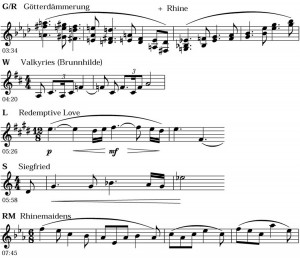 But Wagner did not take into consideration these pessimistic opinions and began in September 1853 his music composition work. Certainly, some themes had already been drafted but it was then about gathering together all the pieces of the jigsaw puzzle and assembling them in a musically coherent set. During the composition work (which was interrupted between 1857 and 1864, after the draft composition of the second act of Siegfried, in order to give rise to Tristan and Isolde and The Master-Singers of Nuremberg), Wagner used repeatedly the principle of “evolutionary” leitmotifs, musical phrases intended to characterize a character, an object, an idea, a concept, and develops an orchestration that no composer had used before.
But Wagner did not take into consideration these pessimistic opinions and began in September 1853 his music composition work. Certainly, some themes had already been drafted but it was then about gathering together all the pieces of the jigsaw puzzle and assembling them in a musically coherent set. During the composition work (which was interrupted between 1857 and 1864, after the draft composition of the second act of Siegfried, in order to give rise to Tristan and Isolde and The Master-Singers of Nuremberg), Wagner used repeatedly the principle of “evolutionary” leitmotifs, musical phrases intended to characterize a character, an object, an idea, a concept, and develops an orchestration that no composer had used before.
During the sixteen hours that stage the confrontation of gods, giants, dwarves and heroes to seize gold, a symbol of absolute power, the central and recurring theme remains that of redemption through love (a theme so dear to Wagner and that the composer had already brought to light in his Flying Dutchman and his Tannhäuser) that dominates the cycle, furthermore finishing at the very end of Twilight of the Gods in an almost dazzling glorification.
When Wagner met King Ludwig II of Bavaria in 1864, who became his principal patron, he reconnected with his idea of building a theatre (initially designed to be ephemeral) and which would be specifically dedicated to performances of the cycle. It must be said that thanks to this royal patronage, all or almost all, including the composer’s wildest dreams, was then possible. The talks were well underway, and in 1864 it was possible to consider the project, to develop plans, to sketch the wildest speculations. But the quarrel- imposed by the enmity of the people of Bavaria towards the composer – between the king and Wagner put an end to the project, at least in its original version planned in Munich.
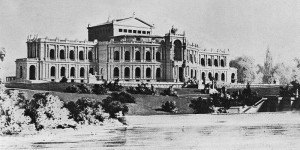
But when, in his Tribschen residence, he resumed the composition of the end of Siegfried and began that of Twilight of the Gods, Wagner reconnected with his dreams of being a builder. By his side, a young philosopher student, Friedrich Nietzsche, wrote his first essay on The Birth of Tragedy. The philosopher and the musician agreed on the need for a return to the Ancient theatre, both in terms of the performance of works on stage and in the construction of the building intended to host them: a vast amphitheatre – the opposite of the Italian style theatres with their boxes- where all, whether noble, bourgeois, student or worker, would sit next to each other without distinction of social order, the attention of all being solely on the stage and in near pitch black conditions.
To the greatest outrage of the composer, King Ludwig II of Bavaria decided that The Rhinegold as well as The Valkyrie would be created and presented to the public respectively on 22 September, 1869 and 26 June, 1870. Wagner, furious, would of course not attend these performances.
To escape the jurisdiction of the kingdom of Bavaria (King Ludwig II indeed owned the performance rights of the first two “episodes” of the cycle), where the cycle of The Ring could not be staged according to the requirements of its master, Wagner thought of building somewhere else. It would be in Bayreuth, in Upper Franconia.
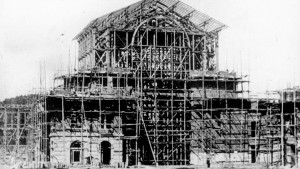 By multiplying the concerts, by calling on private patronage, thanks to the help of his dearest friends, the laying of the foundation stone of the Bayreuth Festival Theatre was celebrated with great fanfare on 22 May, 1872, on the composer’s birthday.
By multiplying the concerts, by calling on private patronage, thanks to the help of his dearest friends, the laying of the foundation stone of the Bayreuth Festival Theatre was celebrated with great fanfare on 22 May, 1872, on the composer’s birthday.
Little by little, the theatre emerged from the ground, and the performances of the first cycle were planned for 1875 (the musical rehearsals had begun in 1874). But funding was headed for a disaster; despite their temporary quarrel, King Ludwig II of Bavaria came to his protege’s rescue and that was how the first cycle, postponed nevertheless for a year was produced, at the Bayreuth Festival Theatre, between 13 and 17 August, 1876. The musical direction was entrusted to the faithful Hans Richter and it was Richard Wagner himself who conceived and directed the staging of the four works.
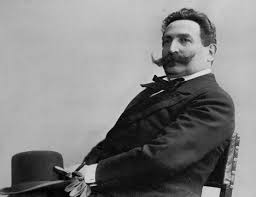 After the Bayreuth Festival performances, it was up to the impresario and theatre director Angelo Neumann to make The Ring known. At the head of the Wagner Traveling Theater, he presented the work – with the production – sets and costumes of the first edition of the Bayreuth Festival – in the main cultural capitals of Europe. Little by little, at the end of the 19th century (in 1892 at the Covent Garden Theatre in London, in 1898 at the Berlin Opera House) and at the beginning of the 20th century (Brussels in 1901…), the four operas of the cycle quickly imposed themselves as essential works of the lyrical repertoire.
After the Bayreuth Festival performances, it was up to the impresario and theatre director Angelo Neumann to make The Ring known. At the head of the Wagner Traveling Theater, he presented the work – with the production – sets and costumes of the first edition of the Bayreuth Festival – in the main cultural capitals of Europe. Little by little, at the end of the 19th century (in 1892 at the Covent Garden Theatre in London, in 1898 at the Berlin Opera House) and at the beginning of the 20th century (Brussels in 1901…), the four operas of the cycle quickly imposed themselves as essential works of the lyrical repertoire.
Generally presented during the entire cycle, sometimes one of the operas (in particular The Valkyrie, the most popular) is nevertheless performed on its own.
Spearheading the Bayreuth Festival, the complete cycle of The Ring is performed there almost every year… since 1876!
NC.
If you wish to share further information about this article, please feel free to contact us !
